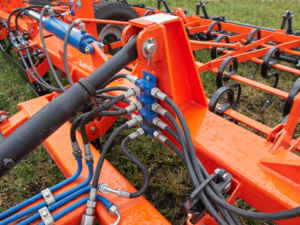Hydraulics is a technology that uses pressurized liquids to transmit force and motion. It is based on the principle that when a fluid (usually a liquid, but sometimes a gas) is confined in a closed system and subjected to pressure, it will transmit that pressure equally in all directions.

Here’s a simplified explanation of how hydraulics works:
- A pump generates pressure in a fluid (usually oil) and sends it through a system of tubes or hoses to a hydraulic cylinder or motor.
- The pressure forces the fluid into a small chamber within the cylinder or motor, which is separated from a larger chamber by a piston or rotor.
- As the fluid pushes against the piston or rotor, it moves and transmits the force to a mechanical load, such as a cylinder, arm, or actuator.
- When the pump is turned off or the fluid is redirected, the mechanical load returns to its original position.
Hydraulics is used in a wide range of applications, including construction equipment, manufacturing machinery, and aircraft control systems. It is particularly useful for transmitting force over long distances or when high levels of force are required.
